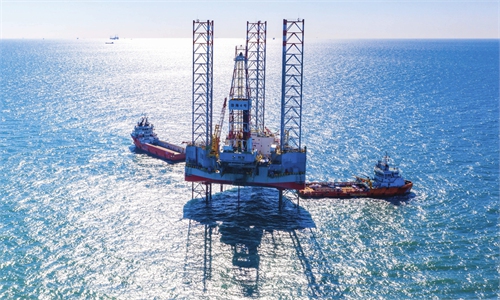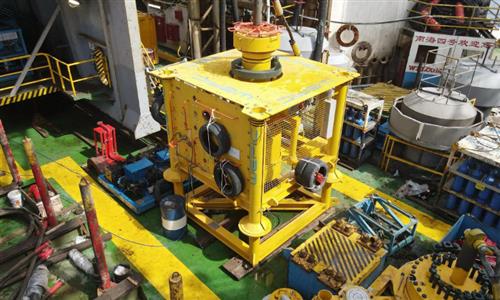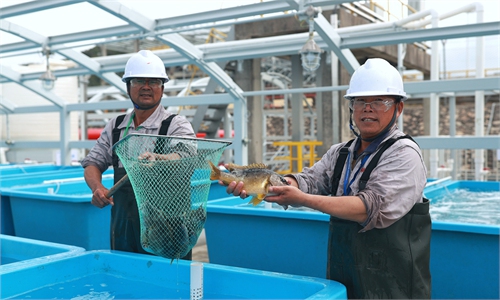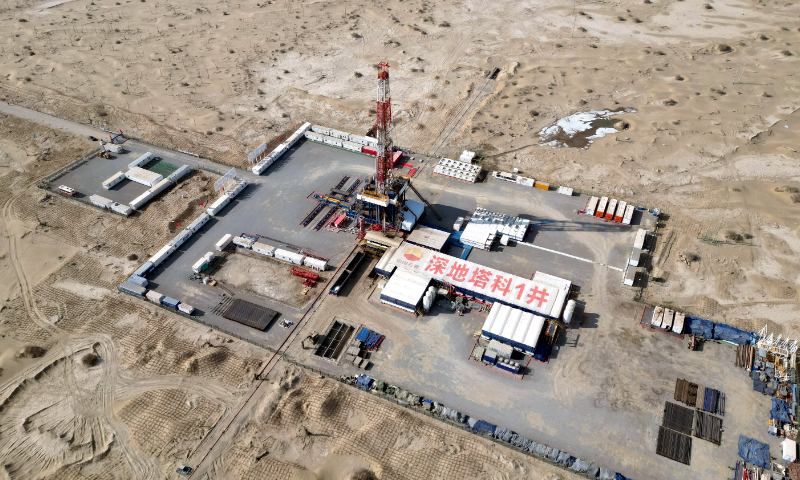
This photo taken on March 1, 2024 shows the Shendi Take 1 ultra-deep well in the Tarim Basin in Northwest China's Xinjiang Uygur Autonomous Region. Photo: VCG
China's ultra-deep oil well broke through the 10,000-meter depth mark on Monday, after 279 days of drilling. This is China's first well to exceed a vertical depth of more than 10,000 meters. It has the record for the deepest well in Asia and also the world record for the shortest time taken to drill a 10,000-meter deep well.
It shows that China has independently overcome the bottleneck in extra-deep well drilling technology, and that its deep-earth oil and gas drilling capability and supporting technology have reached the international advanced level.
With a designed depth of 11,100 meters, the Shendi Take 1 ultra-deep well, located in the Tarim Basin in Northwest China's Xinjiang Uygur Autonomous Region, is part of China's efforts to expand domestic oil production.
The well will also be used to carry out deep-earth science exploration to examine the internal structure and evolution of the Earth, as well as oil and gas accumulation in the 10,000-meter-deep layer, China National Petroleum Corp (CNPC), the operator of the well, said in a post on its WeChat account.
The drilling started on May 30, 2023 and will continue to the designed depth of 11,100 meters, said CNPC.
The difficulty increases exponentially as the depth increases, project personnel said. The Shendi Take 1 ultra-deep well crosses 13 earth layers in the basin from top to bottom. Currently, the 12th layer has been drilled, and drill bits are drilling into rocks dating back 500 million years.
In order to hit the 10,000-meter-deep mark, China independently developed the world's first automatic drilling rig that can reach 12,000 meters. It involves technology such as 220 C ultra-high temperature drilling fluid and high temperature-resistant screws.
At the same time, various kinds of core equipment and technologies were used, with 21 breakthroughs in seven categories, and the localization rate of materials and equipment used reached 90 percent.
According to the project staff, 26 drill bits and 1,060 drill stems have been used to drill the well.
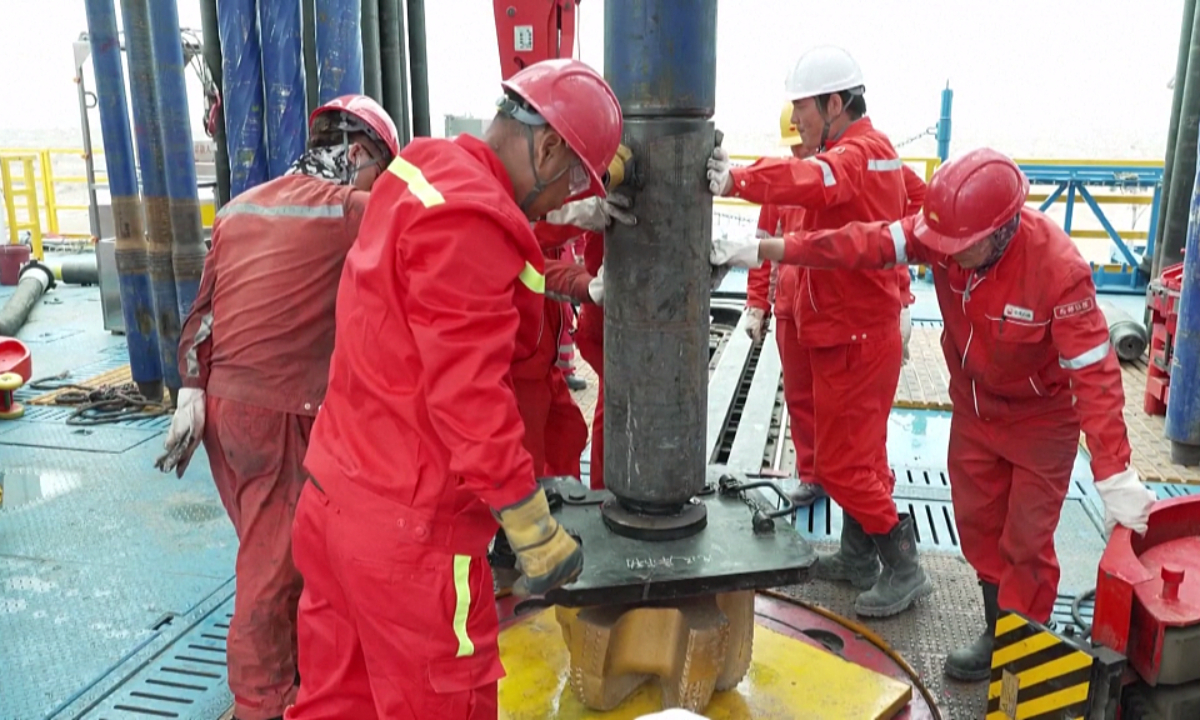
Workers of CNPC operate an oil rig at the Shendi Take 1 ultra-deep well in the Tarim Basin in Northwest China's Xinjiang Uygur Autonomous Region. Photo: VCG
In the oil drilling industry, wells that are between 4,500 and 6,000 meters deep are called deep wells. Wells that are between 6,000 and 9,000 meters deep are called super-deep wells, and those that are deeper than 9,000 meters are classified as ultra-deep wells.
At present, China's onshore deep and ultra-deep oil and gas resources account for 34 precent of the country's total oil and gas resources, and the proportion of new deep and ultra-deep oil and gas reserves is increasing year by year.
The Tarim Basin is China's largest petroliferous basin, accounting for more than 60 percent of the country's onshore ultra-deep oil and gas resources.
However, the Tarim Basin is also one of the most difficult areas to explore in China, in part because many of its reserves lie between 6,000 and 10,000 meters underground.
Therefore, technological innovations that allow for ultra-deep wells have become crucial.
In recent years, China has conducted ultra-deep well projects in the Tarim Basin and has successfully drilled more than 140 wells with a depth of more than 8,000 meters.
In 2023, CNPC's oilfields in Tarim Basin produced 19.57 million tons of ultra-deep oil and gas, ranking first in China and making the basin the largest ultra-deep oil and gas production base in the country.
Global Times
